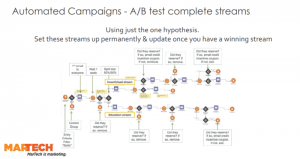The Supply Chain Crisis Broke The Marketing Rules. You Should, Too
There’s an adage often attributed to Winston Churchill: “Never let a good crisis go to waste.” A crisis is a gift, permission to break rules and build something better. So let’s examine the supply chain crisis and how to break the rules for your business and build something better.
Yes, expectations should be properly set with customers in all channels, gift cards should be considered as a purchase alternative, and efforts should be made to keep people in the current product until supply returns. Those, and similar actions, are critical, but also comparatively obvious and much discussed at this point.
Stop, step back, and acknowledge that supply chain disruptions have likely turned the fundamentals of your market upside down. Demand now exceeds supply. For many that’s never been true before, certainly not to this degree.
Most advertisers have a balance of retail advertising and brand advertising, and for most, the retail budget is significant and unassailable. Here’s the gift of the crisis: It’s time to reduce retail ad spend and increase investment in brand advertising. This is imperative. It’s impossible to drive extra share or sales right now. But it is possible to drive higher sales, share, and profit in the long term.
We know brand campaigns are key to building long-term sales, share, and profit. Indeed, when it comes to building business over time, brand campaigns are about three times as likely to drive share growth, and twice as likely to grow profits.
And yet, marketers usually feel beholden to a certain, often elevated, level of short-term demand building because it’s what they feel the business needs. Making a greater investment in brand advertising is the business opportunity to come out of the crisis stronger than when it began.
There are those who might disagree and instead say a supply chain crisis is the time to drastically cut budgets or go dark. Much has been written on this topic. Most recently, an examination of Procter & Gamble’s increasing marketing and revenue during COVID, while Coca-Cola did the opposite, provides the latest evidence: Invest in the future to build a business, especially during a crisis.
The idea of investing in long-term growth amid a supply crisis can be difficult to embrace. But there is a synergy in the emotional advertising needed to build long-term demand, and the short- to medium-term business objectives of a supply crisis.
Emotional advertising has longer-term effects because emotions last longer than rational thoughts. The brand advertising needed during a supply chain crisis must have an emotional effect so that effects last until there is more product to sell.
BUT emotional advertising ALSO generates stronger loyalty and pricing effects. Right now, there is doubtless worry about customers having to pay more and/or wait for products to become available, and that those customers could instead choose to purchase a competitive product. Emotional advertising, captivating the audience and reinforcing brand love so competitors are spurned, is exactly the kind of advertising needed during a supply crisis.
(28)
Report Post





